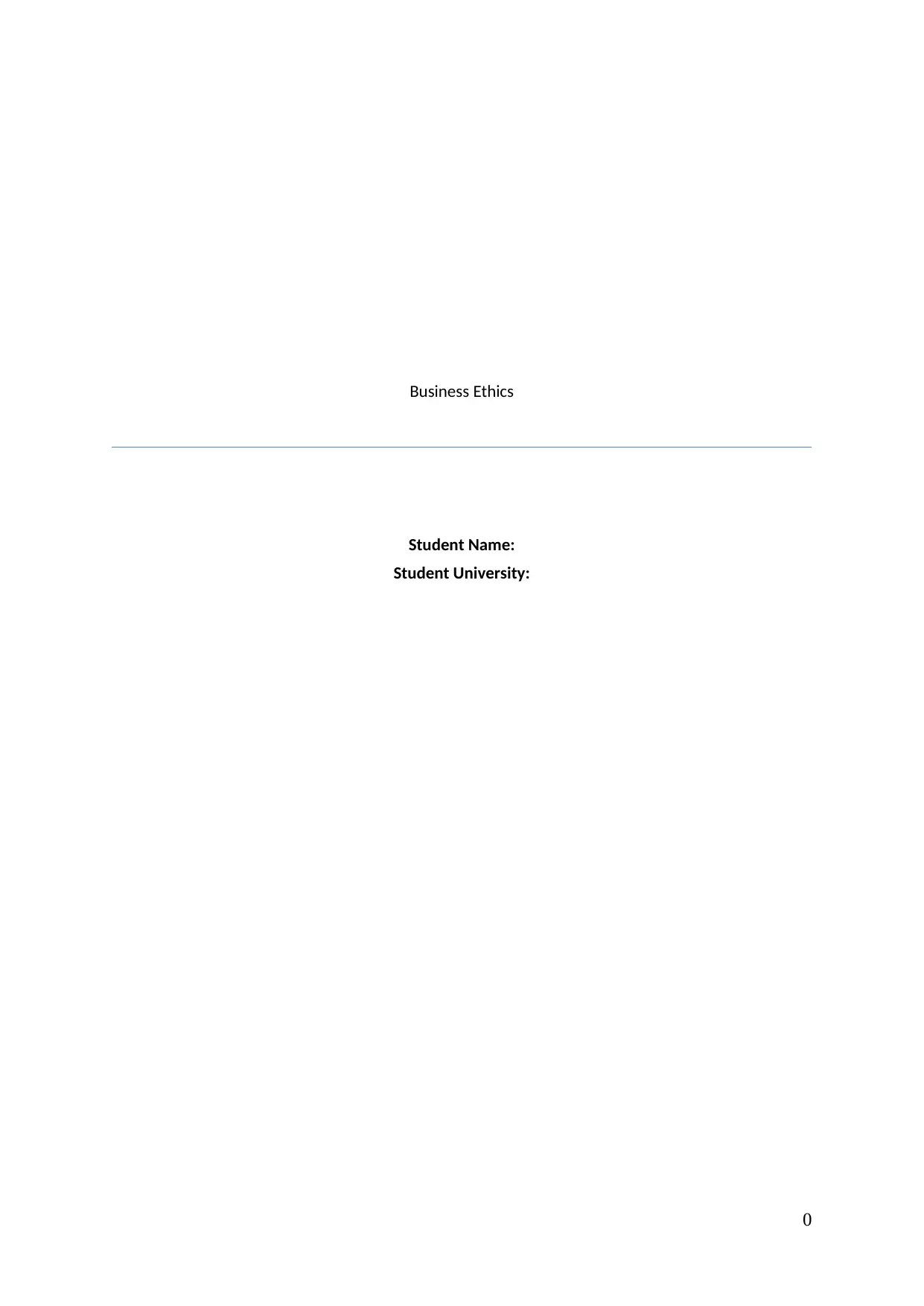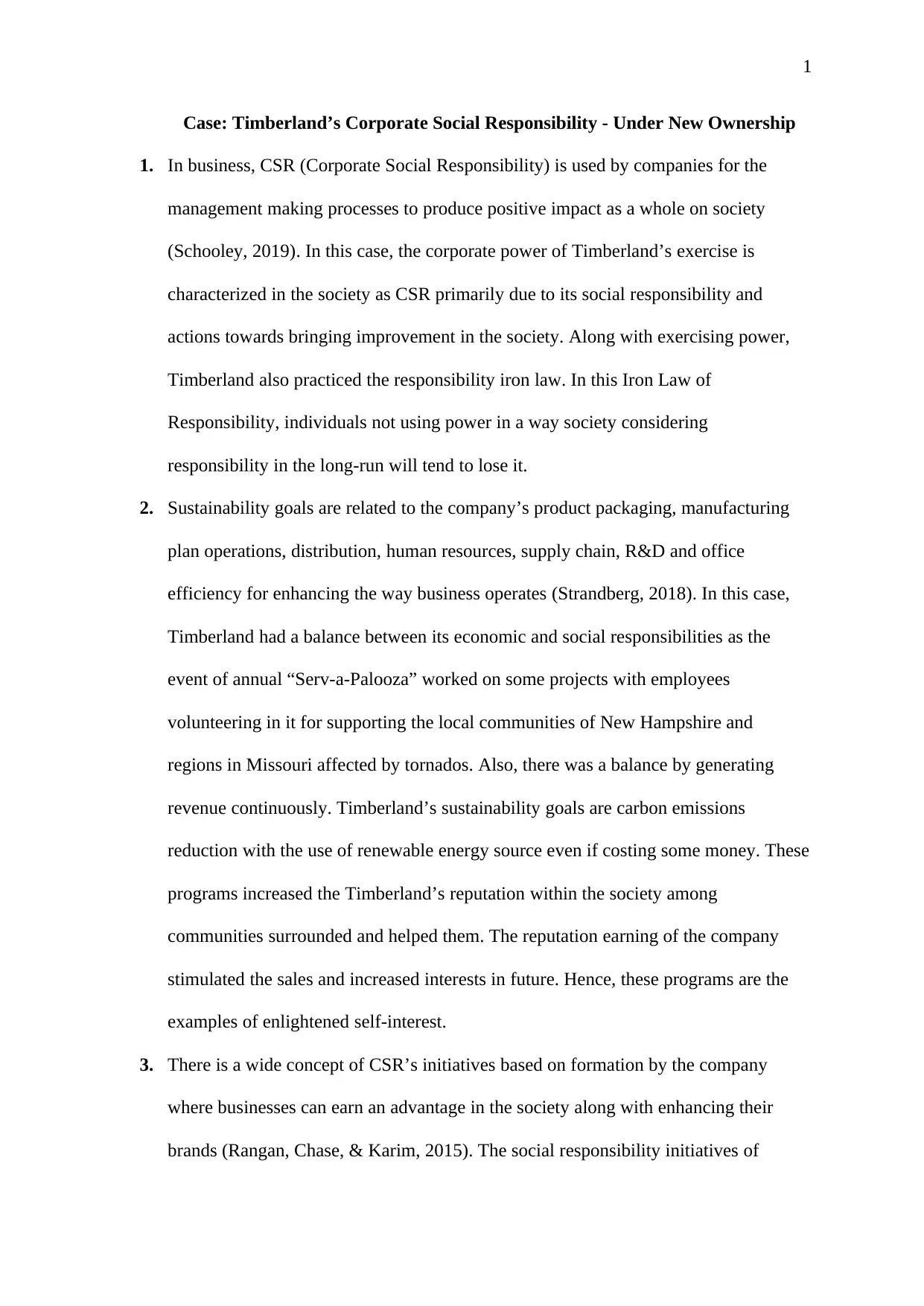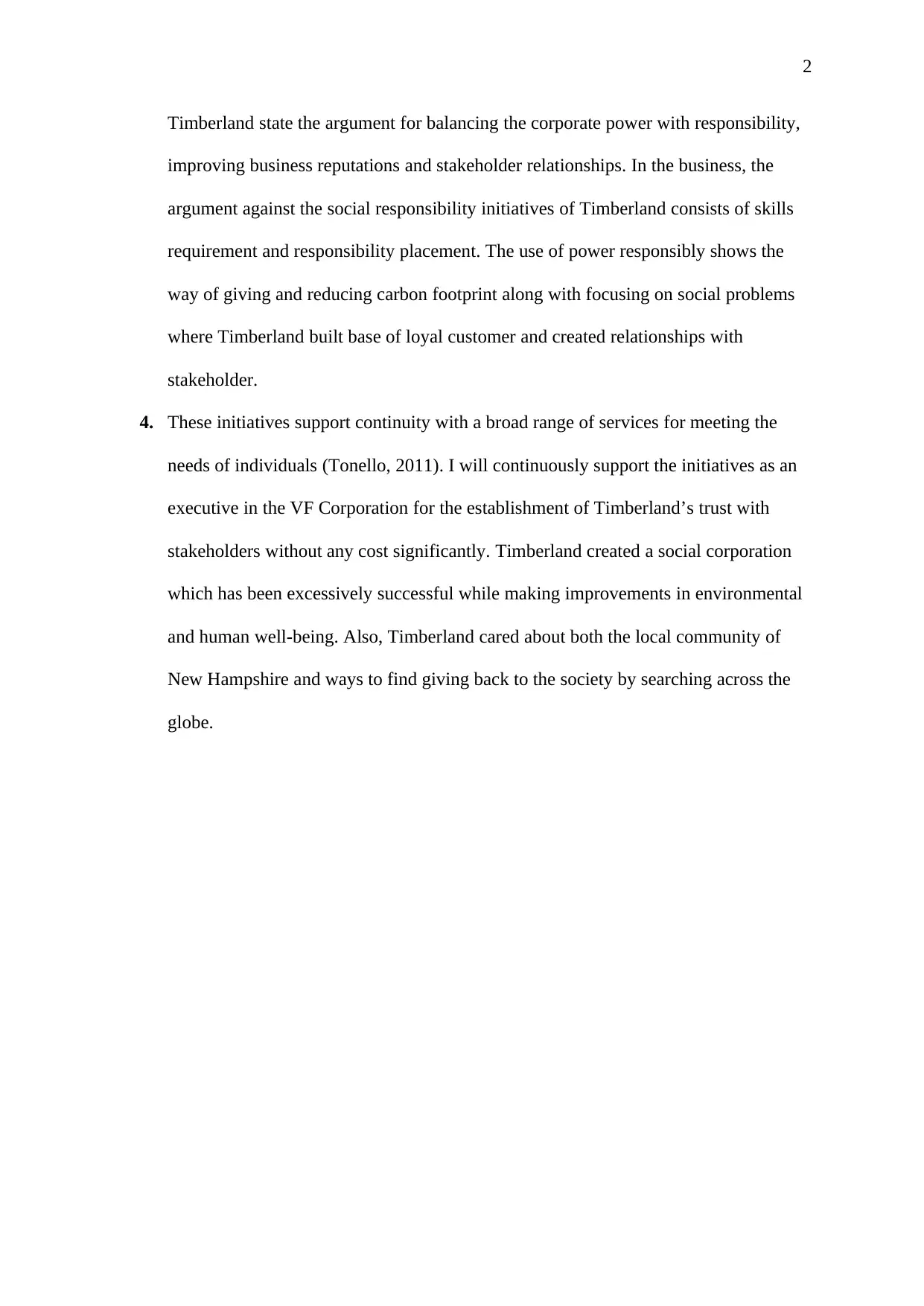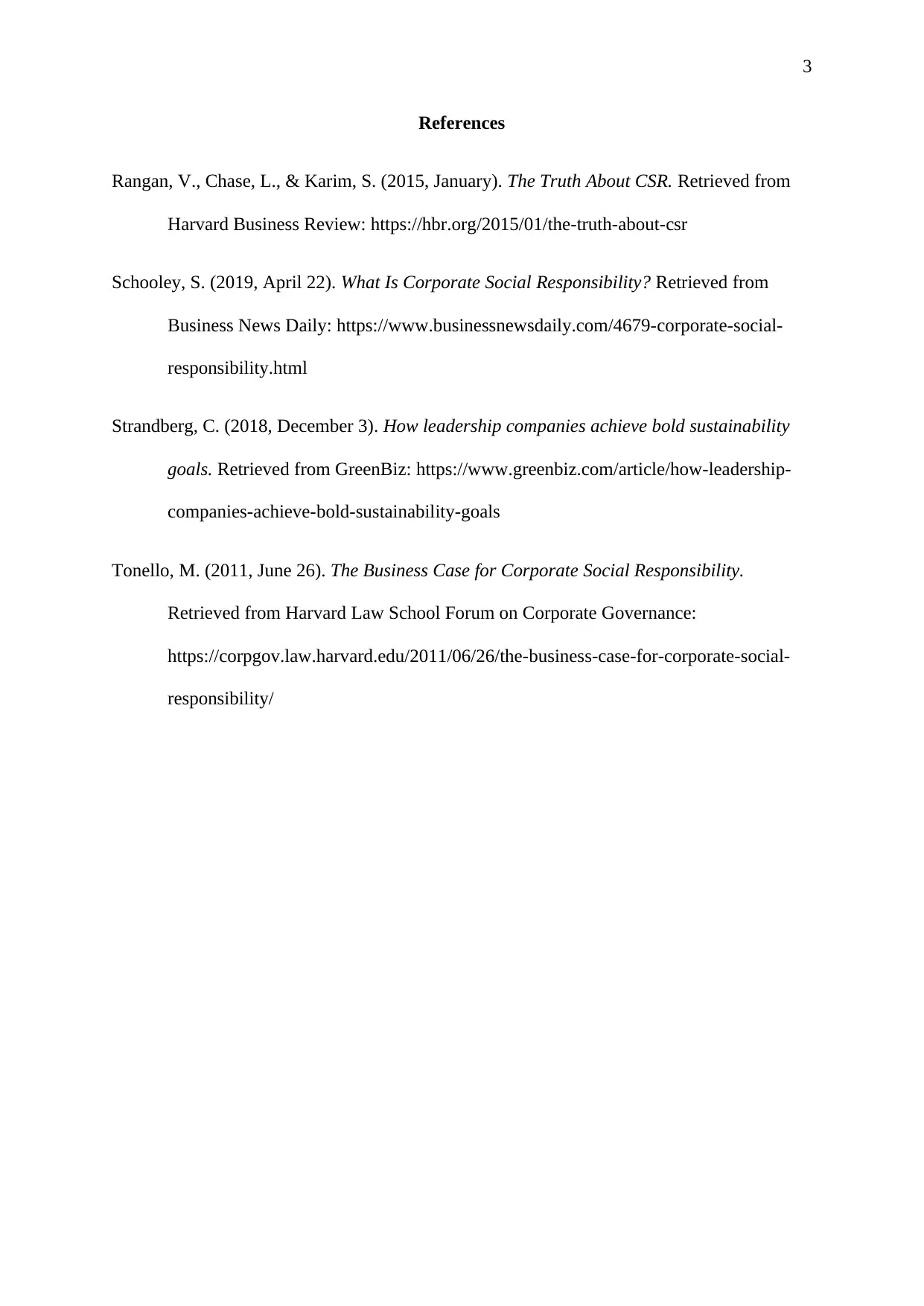Business Ethics: Timberland's CSR Case Study & VF Corporation
VerifiedAdded on 2022/08/12
|4
|623
|20
Case Study
AI Summary
This case study examines Timberland's Corporate Social Responsibility (CSR) practices, particularly focusing on its transition under VF Corporation's ownership. It highlights Timberland's long-standing commitment to CSR, emphasizing its mission to create outstanding products while making a positive impact on communities. The analysis explores how Timberland balanced economic and social responsibilities, including initiatives like the "Serv-a-Palooza" program and sustainability goals. The study also discusses the arguments for and against Timberland's CSR initiatives, emphasizing the importance of balancing corporate power with responsibility and building strong stakeholder relationships. The conclusion supports the continuation of these initiatives, highlighting their success in improving environmental and human well-being.
1 out of 4











![[object Object]](/_next/static/media/star-bottom.7253800d.svg)